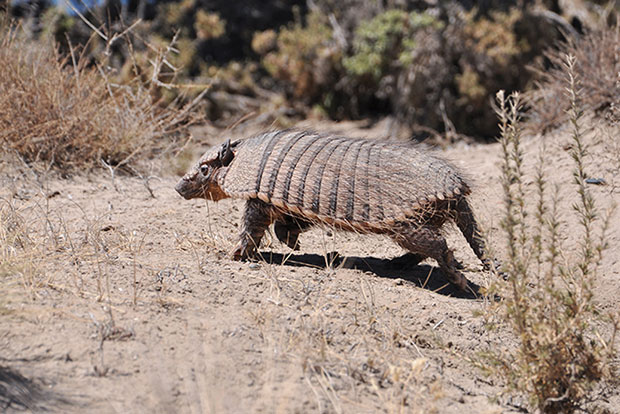FLORA
The flora of the Lavalle desert is described as it follows. Lavalle is included within the phytogeographic province of Monte. The desert areas allow the development of species such as sweet carob (Prosopis flexuosa), jarilla (Larrea divaricata) and zampa (Atriplex lampa). The sauce criollo (Salix humboltiana) is found in isolated communities, like the tamarind (Damaris gallica) and chañar (Geoffrea decorticans).
In the saline soils dominate the halophytic vegetation, a resource that is used for goat livestock breeding and ecological beekeeping.
Flora of the lakes: The humidity of marshes and lakes promotes the development of reeds and cattails, which has been greatly reduced nowadays. There also appear the sweet carob trees and chañar; shrubs such as jarilla, chilca, the alpataco (Prosopis alpataco) and zampa. Some species have a special importance such as junco (Scyprus californicus), totora (Typha dominguensis) and the junquillo (Sporobolus rigens), widely used in basketry.
FAUNA
The Lavalle wildlife includes animals adapted to aridity, including edentate mammals such as armadillos (quirquinchos, peludo, pichi and pichiciego) and felines (gato montés, gato del pajonal, yaguarundí and puma), in addition to the countless bird species. In the lakes there are fish species and waterfowl (ducks, flamingos, etc.).
HYDROGRAPHY
Considering the wide use of the water from the Mendoza and San Juan rivers in their middle and upper parts, the Rosario and Huanacache complex of lakes has lost the water feeding of the past. The water that used to be poured into those lakes used to run to the Desaguadero River.
Throughout the nineteenth century the volume of water in this lacustrine complex has reduced drastically, as well as its importance for the region’s economy. At present, the importance of this hydrographical resource is purely political, as it works as an administrative boundary between Mendoza and San Luis.






